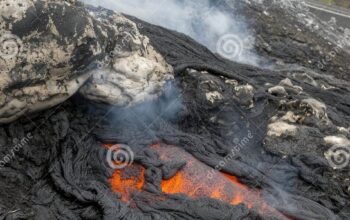The phenomenon of global warming has garnered extensive attention from researchers, policymakers, and the public alike. While carbon dioxide and other greenhouse gases have long been alleged exclusively responsible for this climatic alteration, recent investigations illuminate the pivotal role played by water vapor, particularly in the context of its fluctuations. This discourse aims to examine the connection between a discernible decline in global warming and concomitant reductions in water vapor, shifting the narrative toward an increasingly intricate understanding of atmospheric dynamics.
Water vapor, the most abundant greenhouse gas in the Earth’s atmosphere, possesses a unique reactivity and role in the thermal regulation of our planet. Its capacity to absorb infrared radiation vastly surpasses that of carbon dioxide. Notably, it is the only greenhouse gas that exhibits significant variations influenced by natural processes and human activities. Consequently, understanding water vapor dynamics becomes essential for comprehending the overall behavior of our climate system.
Recent trends in atmospheric studies have observed a marked dip in water vapor concentrations over the last decade. What may seem like merely a statistical anomaly is, in fact, a catalyst for a broader reevaluation of hypotheses regarding global warming. Historically, it has been assumed that an increase in water vapor would directly correlate with rising temperatures due to its greenhouse effect. However, emerging data indicates that the current dip in water vapor levels may contribute to a temporary respite from drastic temperature increases.
This revelation spurs curiosity and calls for a deeper investigation into the interplay between water vapor and climate modulation. The relationship between surface temperatures and water vapor is inherently non-linear; fluctuations in one can lead to unexpected repercussions in the other. For instance, as temperatures rise, the capacity of the atmosphere to hold moisture increases, resulting in enhanced humidity levels, which can trigger positive feedback mechanisms that amplify warming. Conversely, the recent reductions in water vapor could signify a deceleration of these feedback cycles.
An exploration of the mechanisms driving this reduction in water vapor is warranted. Firstly, the interplay between oceanic temperatures and atmospheric moisture must be scrutinized. The oceans serve as a significant reservoir for water vapor, and variations in sea surface temperatures can precipitate alterations in evaporation rates. In recent years, cooler oceanic temperatures in certain regions have manifested, leading to a concomitant decrease in atmospheric moisture. As ocean temperatures fluctuate due to phenomena such as La Niña or the Atlantic Multidecadal Oscillation, the repercussions reverberate through the atmosphere, influencing precipitation patterns and humidity levels.
Additionally, anthropogenic factors cannot be ignored. Changes in land use, the prevalence of aerosols, and shifts in agricultural practices can influence local and regional climate patterns, thereby affecting atmospheric water vapor concentrations. Urbanization can exacerbate the heat island effect, causing increased evaporation rates in some locations while simultaneously leading to diminished moisture retention in others due to landscape alterations. Moreover, the advent of greenhouse gas reduction strategies is leading to complex interactions with the global hydrological cycle.
However, the implications of a water vapor dip extend beyond mere temperature modulation. This phenomenon could reshape our understanding of climate feedback loops and the complexities of atmospheric interactions. For instance, a decrease in water vapor may exert influences on cloud formation and precipitation, which could have cascading effects on ecosystems and agricultural practices. As clouds play a dual role—reflecting incoming solar radiation while trapping outgoing heat—the dynamics of their formation and dissipation are crucial in understanding overall climatic shifts.
The paradox of climate change, wherein certain regions may experience cooling amidst a global trend of warming, underscores the necessity for nuanced climate models. The complexity of atmospheric chemistry necessitates advanced computational simulations to accurately predict future climate trajectories. Current models tend to simplify water vapor dynamics, often treating it as a fixed parameter rather than a variable influenced by multifaceted interactions. Incorporating water vapor fluctuations into predictive algorithms could yield more robust forecasts and inform effective policy interventions.
Moreover, enhanced understanding of water vapor dynamics invites us to reconsider climate management strategies. The current narrative primarily revolves around carbon sequestration and emission reduction, yet shifts in atmospheric moisture could present alternate pathways for mitigation. As research progresses, leveraging our understanding of water vapor could yield insights into adaptive strategies for agriculture, disaster management, and urban planning. The quest for climate resilience thus entails an integrative approach that considers the intricate interactions between various atmospheric constituents, including water vapor.
The scientific community stands at a pivotal juncture, wherein a comprehensive examination of the thermodynamic properties of water vapor may redefine our understanding of climate change. As advancements in observational techniques and modeling capabilities continue to unravel atmospheric complexities, the potential for a paradigm shift in climate science becomes increasingly tangible. This exploration not only offers insight into the apparent lull in global warming but also highlights the multifarious nature of climate variables, challenging preconceived notions and beckoning further inquiry.
In conclusion, the interrelation between a decrease in global warming and water vapor levels underscores a need for a holistic approach to climate studies. By embracing the complexities of water vapor dynamics, researchers can enhance our understanding of the atmospheric interplay, thereby informing both scientific inquiry and policy decisions. The scientific community must persist in unraveling these complexities, as a deeper comprehension of this fundamental atmospheric component could prove critical in navigating the challenges posed by an ever-evolving climate landscape.












